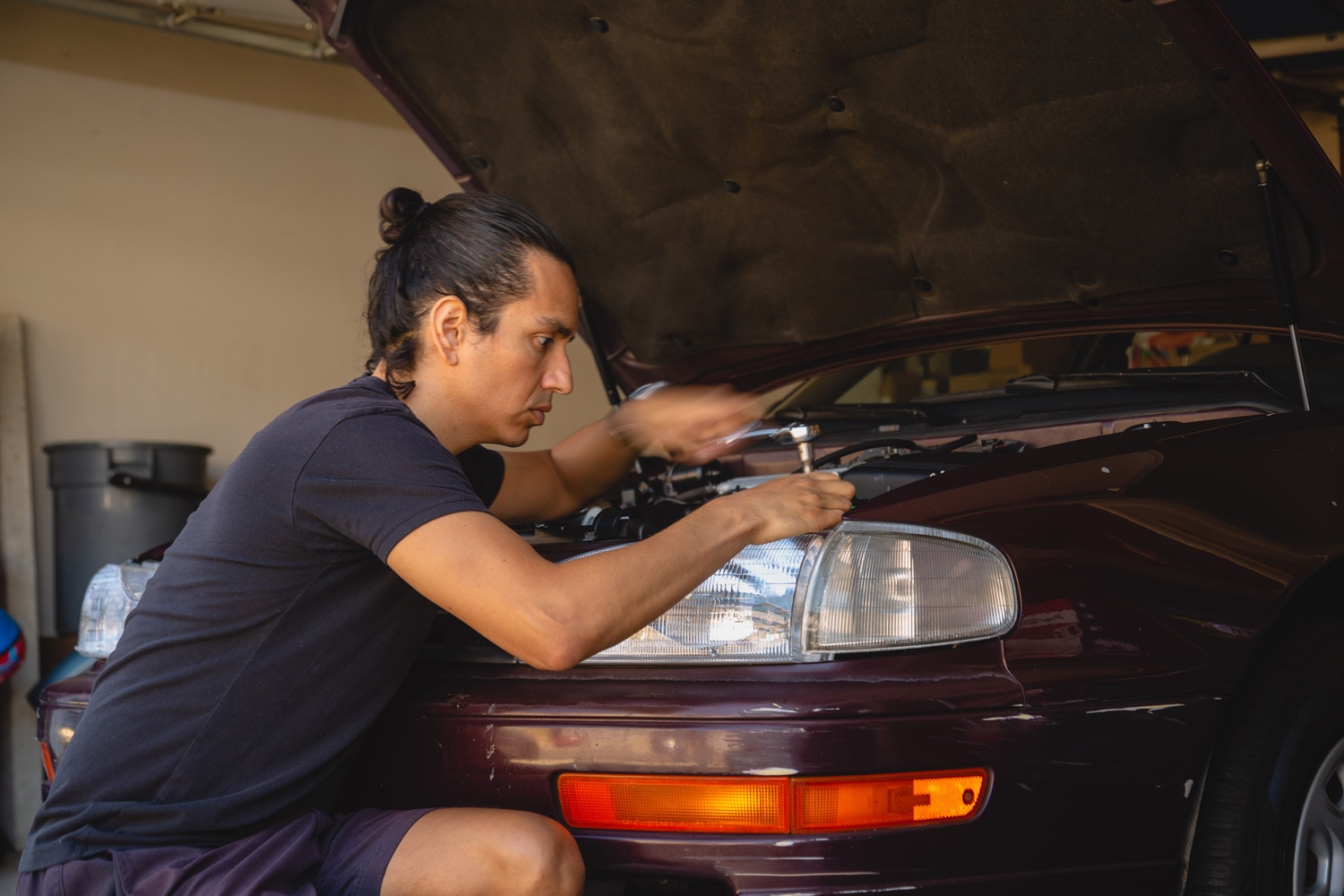Five DIY Maintenance Jobs That Any Car Owner Can Do
Save money and keep your car in top condition with these basic car-care tasks.
 Manuel Carrillo III/Capital One
Manuel Carrillo III/Capital One
You don’t have to take your car to a service shop for every little thing. Here are five jobs you can do that take little effort and expense, require few or no tools, and will go a long way toward keeping your vehicle safe and running smoothly.
 Austin Lott/Capital One
Austin Lott/Capital One
Change the Engine Air Filter
The engine air filter prevents dirt and debris from entering the intake. Over time, the filter can become clogged, which then hampers engine performance and fuel economy. Fortunately, replacing your air filter is easy: Simply open the hood, find the air filter housing (usually located beside the engine), release the attachment clips or remove the fasteners with a screwdriver to expose the filter, and swap in a new one, which typically costs between $15 and $30.
The replacement schedule will vary by car, but generally, you’ll want to inspect the filter once a year and install a new one every 15,000 to 30,000 miles. If you frequently drive on dirt or gravel roads, check it every six months.
 Austin Lott
Austin Lott
Change the Cabin Air Filter
Much like the engine filter, you should inspect the cabin filter at least once per year and change it every 15,000 to 30,000 miles. Just like the filter in your engine bay, the cabin air filter can become clogged with leaves and debris over time. Though clog-induced performance degradation creeps at a snail's pace, long-term neglect means your heating and air conditioning system will work harder and become less effective when breathing through a dirty element.
Most are easily accessible through a latched panel behind the glovebox, below the dashboard on the passenger’s side, or under the hood below the windshield. Your owner’s manual will spell out the exact location, as well as which filter to buy (usually $15 to $30) and how to replace it.
 Manuel Carrillo III
Manuel Carrillo III
Replace the Windshield Wiper Blades
The rubber on a windshield wiper blade degrades over time and may squeak, skip on the glass, or leave streaks of water in its wake. At a minimum, you should inspect the blades every six months and change them once per year, possibly sooner if you live in a seasonally cold climate. (You may also want to consider buying blades designed for winter use.)
Wiper blades cost about $10 to $50 each. They come in a variety of sizes, and the driver’s- and passenger’s-side units are often different lengths, so be sure to purchase the correct ones for your vehicle. You can remove most blades without tools by releasing a locking tab and squeezing a clip to slide them off the wiper arm, but refer to the instructions that came with your replacement blades.
 Manuel Carrillo III
Manuel Carrillo III
Check the Tire Pressure
Every U.S. car built within the last 14 years has a tire pressure monitoring system, but it won’t alert you to an issue until the tires are at least 25% underinflated. However, even marginally underinflated tires can affect safety, tire longevity, and fuel economy. That’s why you should make a habit of checking your pressures at least once a month or at every other fuel fill-up.
Assuming you’re running stock tires, you can find the correct pressure settings on a sticker in the driver’s door jamb, as well as in the owner’s manual. Keep a tire pressure gauge handy in your glovebox. It’s an inexpensive and unobtrusive tool.
If the gauge reads low, you should find an air compressor as soon as possible. Fortunately, most gas stations have one. If the pump does not display the pressure, fill the tire for about 10 seconds and check it with a pressure gauge. If you overinflate a tire, depress the center pin on the tire valve to release air. Remember to reinstall the valve caps or replace any that are missing.
 Austin Lott
Austin Lott
Change the Headlight and Taillight Bulbs
This will depend on what kind of head- and taillights your vehicle has, but if your car uses bulbs or a replaceable lighting assembly, you can often change a dead one for between $15 and $150 with some basic hand tools. Your owner’s manual should indicate what replacement parts to buy and how to install them. Though, be aware that with the rise of LED technology—where bulbs can go for years without replacement—some lighting assemblies have no serviceable parts, and can be expensive to obtain. That said, the process to replace is as simple as removing the fixture and reinstalling a new one.
Written by humans.
Edited by humans.
 Dennie Edwards
Dennie EdwardsDennie Edwards repaired cars for 18 years as an auto technician at Saturn dealerships before joining a commercial-truck manufacturer to help develop a diagnostic tool. He currently authors diagnostic content for construction-equipment technical manuals. As a freelance writer, he enjoys educating consumers on all things automotive with a focus on parts, repairs, and technology.
Related articles
View more related articles